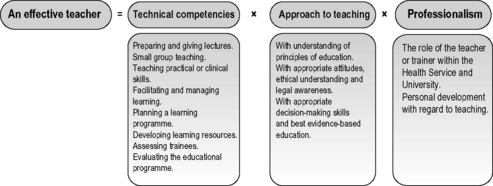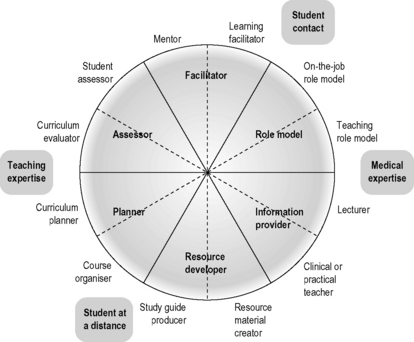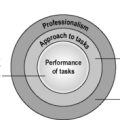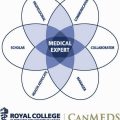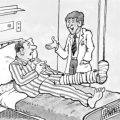1 What is a good teacher?
What is expected of a teacher
• clarify the expected learning outcomes
• deliver a programme with appropriate learning opportunities
To support the student’s learning, the good teacher must have in addition to the necessary subject knowledge, technical skills required for lecturing, facilitating small group discussions, providing feedback, and assessing the student’s competence. To do their job effectively and efficiently teachers should have a basic understanding of the educational principles involved. They should also demonstrate the necessary attitudes and professionalism for the job. Here lies a problem. Staff development programmes and texts on the subject frequently address only the technical competencies, or alternatively focus on the educational theory, which may be seen by the practising teacher as of little relevance. The concept of professionalism and attitudes to teaching are largely ignored. It is now recognised that the effective teacher requires a combination of technical competence, an appropriate approach to their teaching, and professionalism in their work as a teacher (Fig. 1.1). These are described in more detail in the chapters that follow.
The multiplication symbol has been used in the equation in Figure 1.1 rather than the addition symbol. The implication is that a demonstration of technical competence, no matter how good, on its own is not sufficient. A zero score for the approach to teaching or for professionalism will result in a total score for the rating of the teacher of zero.
Technical competencies
Eight core areas of technical task-orientated competencies for a teacher are described in Figure 1.1.
A teacher should be competent in:
• preparing and giving lectures or presentations that engage the audience and make use of appropriate technology
• choosing appropriate small group methods and facilitating a small group teaching session
• teaching practical or clinical skills in a variety of settings including the work place
• facilitating and managing the student’s learning in a range of settings, giving the learner support to obtain the maximum benefit from the learning opportunities available, helping the student to assess his or her own competence and providing feedback to the learner as necessary
• planning an education programme for the students or trainees that combines appropriate learning opportunities to help them to achieve the expected learning outcomes
• identifying, developing and adapting learning resources for use by students in the form of handouts, study guides or multi-media presentations
• assessing the achievement of learning outcomes by the students or trainees using appropriate technologies including written, performance-based and portfolio assessments
• evaluating the education programme including the use of feedback from the learner and peer assessment.
Approach to teaching
• An understanding of basic educational principles. As discussed in Chapter 2, an understanding of basic educational principles helps teachers to adapt the teaching approach to their own situation, to deal with problems and difficulties encountered, and to respond to the need for change as it arises.
• Appropriate ethics and attitudes. The ethical standards expected of medical teachers in their work as a teacher or researcher in medical education has been a focus of attention. As discussed in Chapter 3, the teacher’s attitude is about much more than ethical behaviour. A key factor in student learning is a teacher’s attitude, passion and enthusiasm for the subject and for their teaching.
• Strategies for decision making. Paralleling the move to evidence-based medicine, the need for the teacher to make education decisions informed by the best evidence available is very much on today’s agenda. At the same time the good teacher has to be able to behave intuitively and to respond appropriately to unexpected situations as they arise in the classroom or work-place learning situation. This is discussed in Chapter 4.
Professionalism and scholarship of teaching
Teachers as professionals should be inquirers into their own competence, should reflect on their own teaching practice, and should audit the quality of their teaching. Teachers have the responsibility to keep themselves up-to-date with current approaches to teaching, and to communicate their own experiences and lessons learned to others. This is discussed in Chapter 5.
Writing in Scholarship Reconsidered, Boyer (1990) described teaching as one of the scholarships expected of faculty or staff in a university.
The roles of the teacher
What is expected of teachers will vary depending on their particular role. Harden and Crosby (2000) have identified twelve roles of a teacher, grouped into six areas (Fig. 1.2):
• information provider in a classroom lecture setting or in a clinical or practical class
• role model on the job in clinical practice or in the teaching context
• learning facilitator or mentor
• assessor of the student’s learning and a curriculum evaluator
• curriculum planner or course organiser
• developer of learning resources or producer of study guides.
Roles to the right in Figure 1.2 require more content expertise or knowledge and roles to the left more educational expertise. Roles to the top are associated with face-to-face contact with students and roles to the bottom of the diagram are associated with less student contact. Teaching usually combines several of these roles. It would be unusual to expect a teacher to fulfil all of the roles.
A questionnaire that can be used to assess a teacher’s perception of the importance of the twelve roles, their current personal commitment to each role and their preferred personal future commitment is given in Appendix 7.
As will be seen in the chapters that follow, the different roles and responsibilities require of the teacher a range of competencies and attributes. This can be assessed using the grid in Appendix 7.
Reflect and react
1. How effective a teacher are you in terms of, as summarised in Figure 1.1, your technical competencies, your approach to teaching and your professionalism?
2. Think about your own role as a teacher. You may find it of interest to complete the questionnaire in Appendix 7.
3. From your experience as a teacher or learner think about what is expected of a teacher in each of the twelve roles, as summarised in Appendix 8.
Harden R.M., Crosby J.R. The good teacher is more than a lecturer – the twelve roles of the teacher. Med. Teach.. 2000;22:334-347. AMEE Educational Guide No. 20.
A description of the twelve roles of the medical teacher grouped into six areas.
Hatem C.J., Searle N.S., Gunderman R., et al. The educational attributes and responsibilities of effective medical educators. Acad. Med.. 2011;86:474-480.
This article identifies the skill set of teachers across the medical education curriculum.
Hesketh E.A., Bagnall G., Buckley E.G., et al. A framework for developing excellence as a clinical educator. Med. Educ.. 2001;35:555-564.
A description of the twelve areas of competence expected of a clinical teacher.
Boyer E.L. Scholarship Reconsidered: Priorities of the Professoriate. New York: John Wiley and Sons; 1990.
The classic text that recognised teaching as a scholarly activity.
Skelton A. Understanding Teaching Excellence in Higher Education. London: Routledge; 2005.
An interesting account of what is expected of an excellent university teacher.

